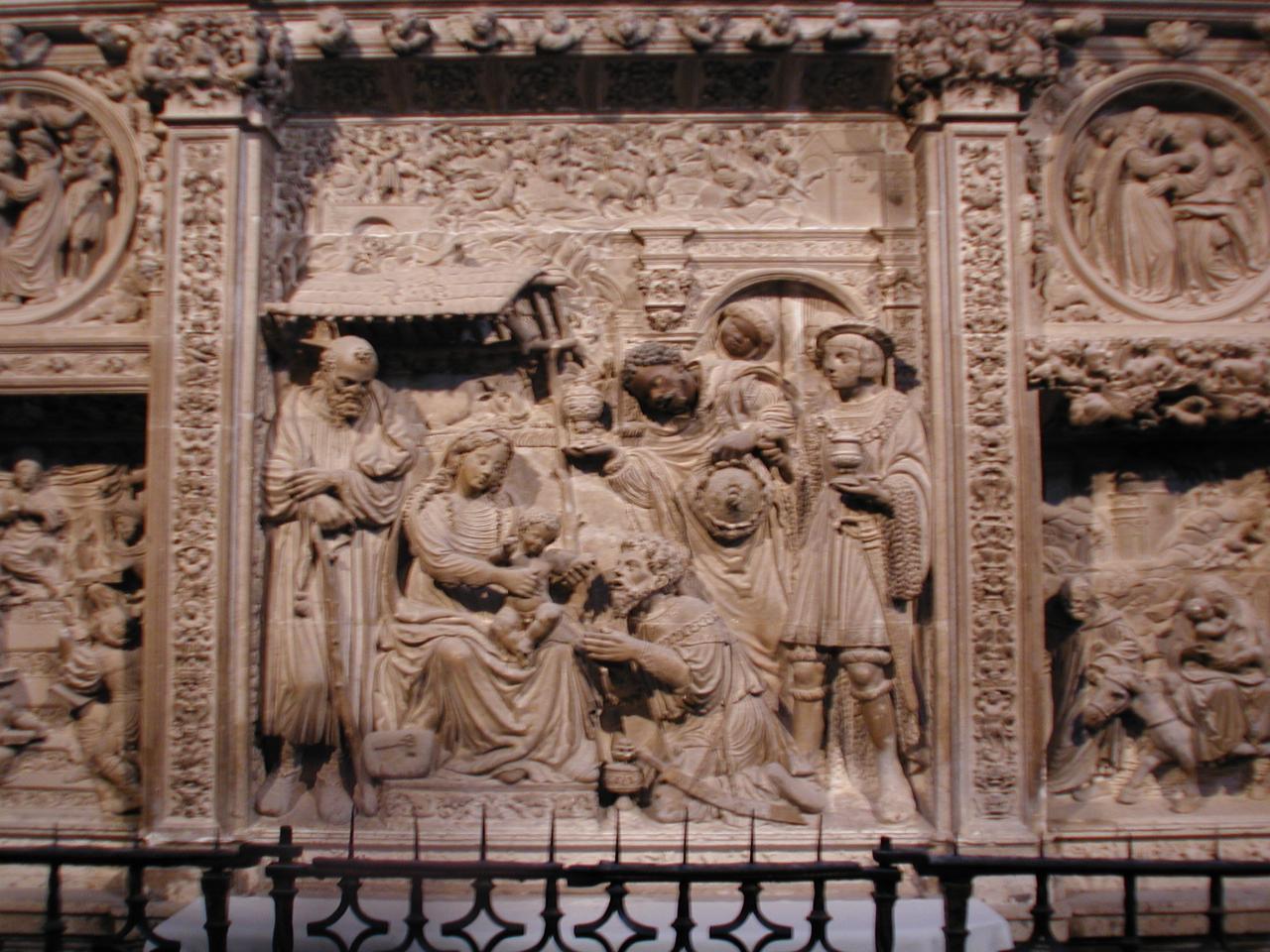

Part of the sculpture on the choir area in the cathedral, by Dutch artist Cornelius. The significance here is the inclusion of the black faced figure - the first time this is known to have happened.
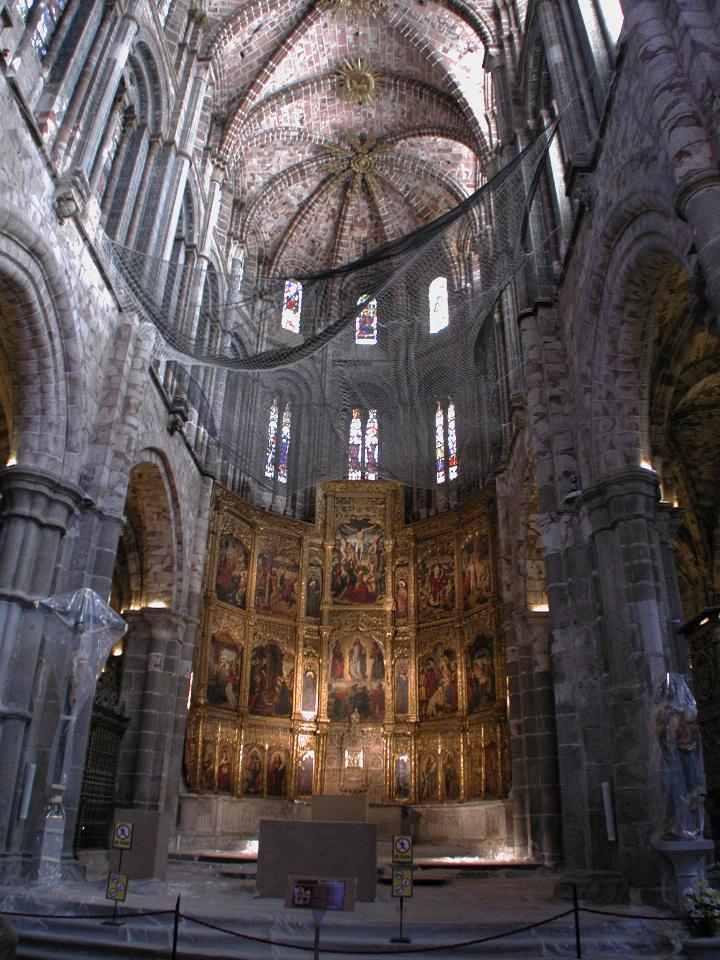
The church is undergoing restoration, especially around the main altar.
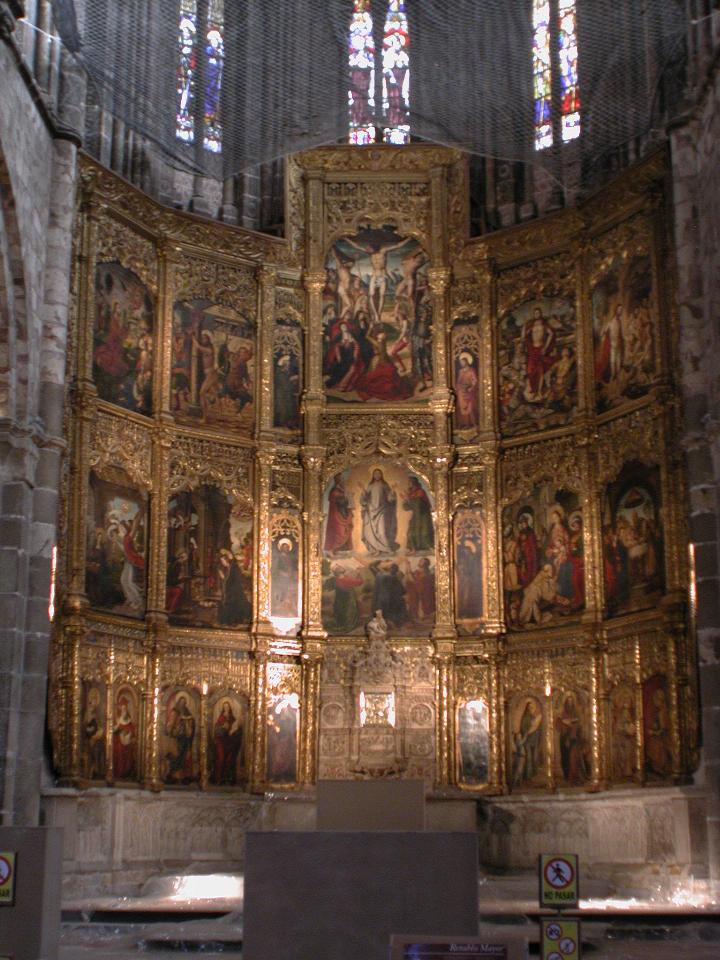
Close up of the altar, featuring scenes from the life of Christ.
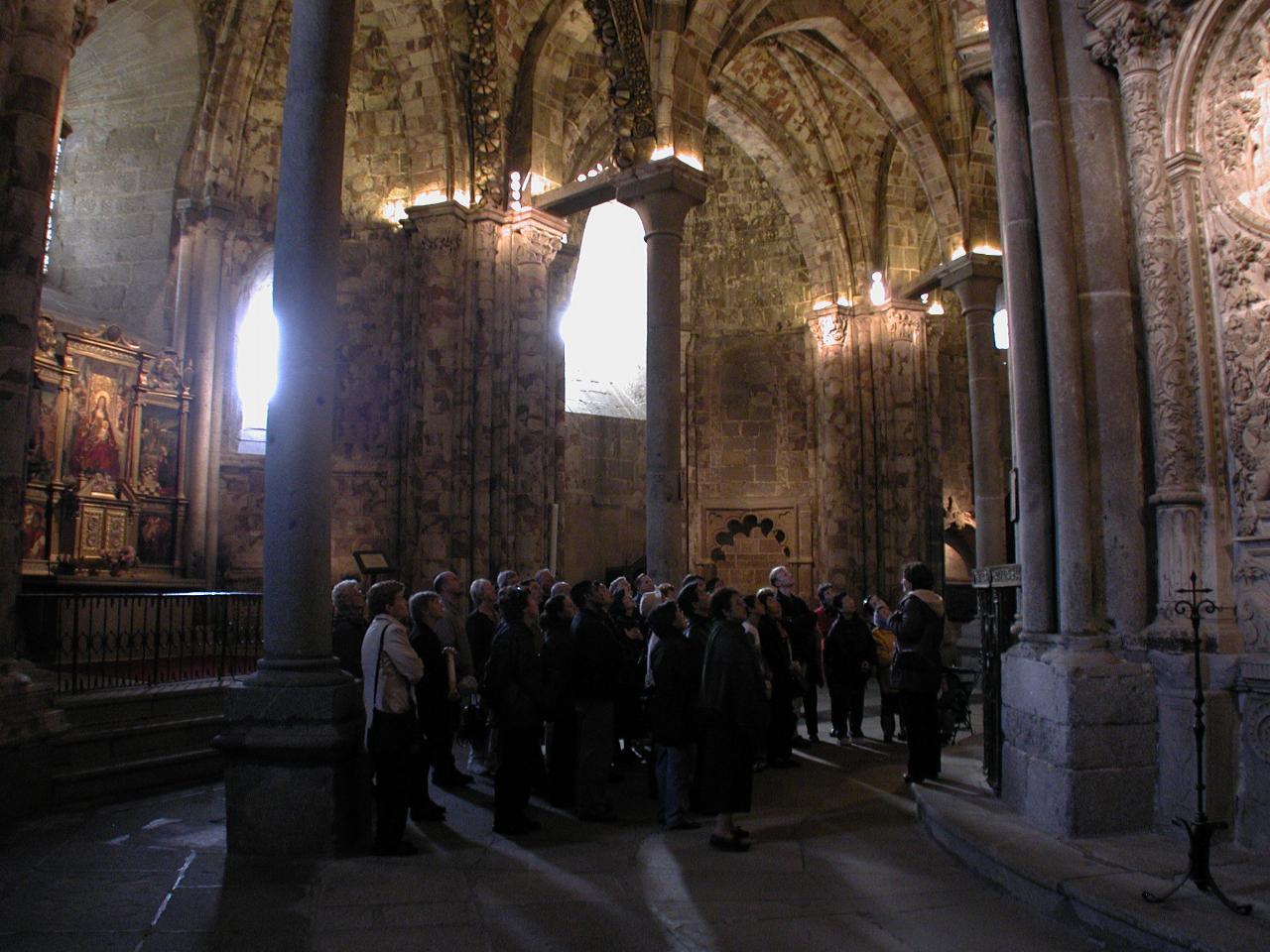
Group N in the apse. The red and white mottled stonework is a characteristic of churches in Avila.
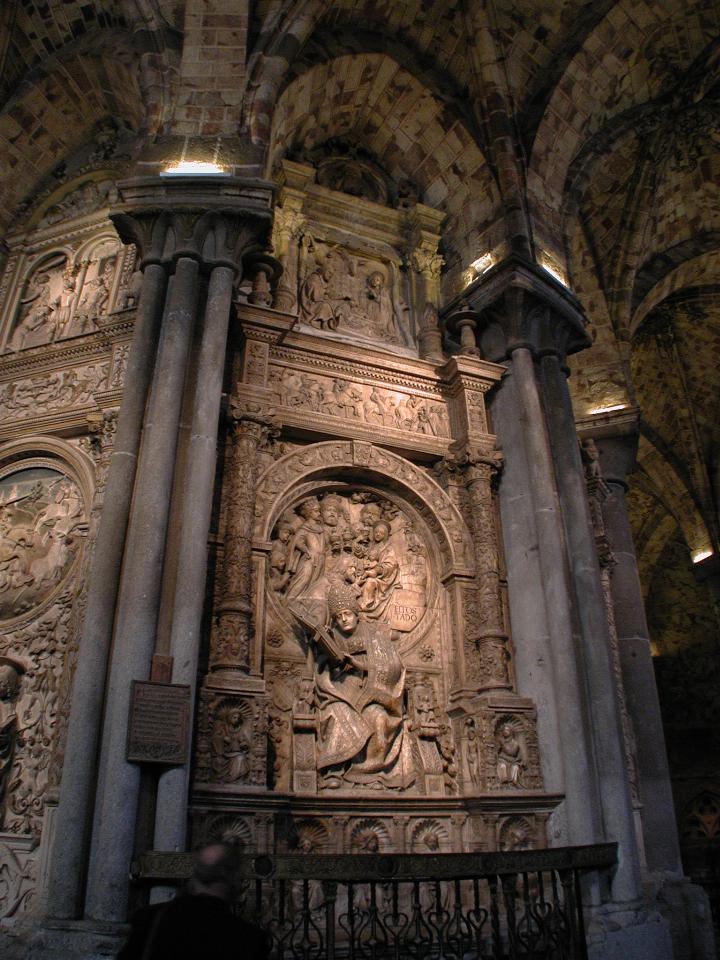
The tomb of Don Alonso de Madrigal, behind the main altar. Completed in 1518, it is sculptor Vasco de la Zarza's most famous work. According to the web site http://www.kfki.hu/~arthp/tours/spain/s_16.html far from submerging the figure of Don Alonso, the wealth of decoration glitters around him like an allegory of the treasures of the spiritual and religious life. The style of Vasco de la Zarza exerted a broad influence in Toledo, Avila and Segovia.
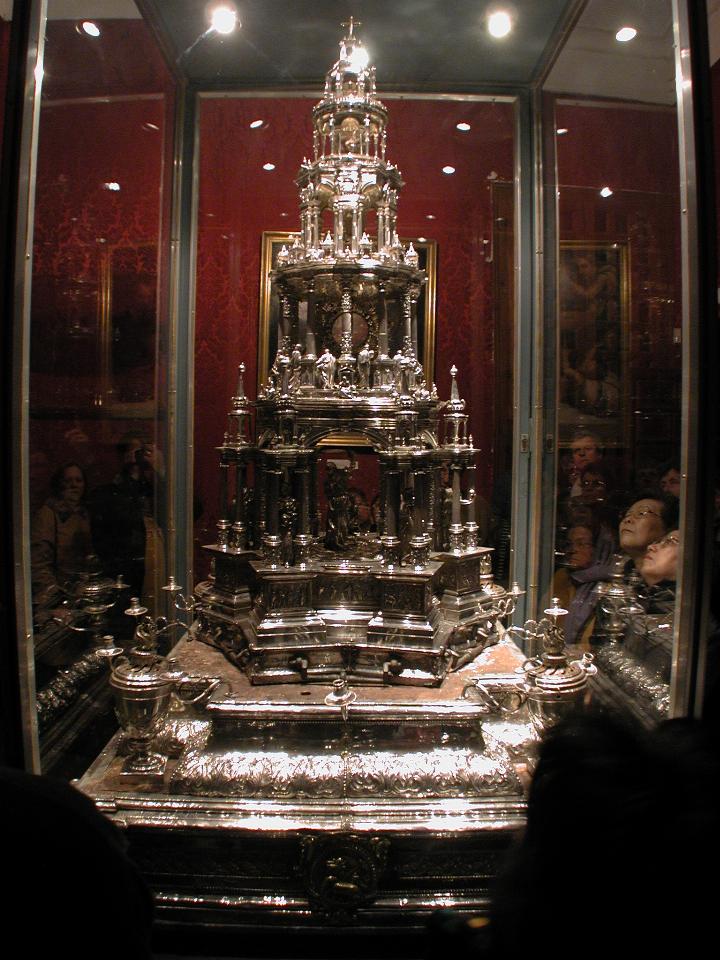
Believe it or not, this is a monstrance - the largest I have ever seen, by a factor of 4 or 5! It is located within the museum section of the cathedral.
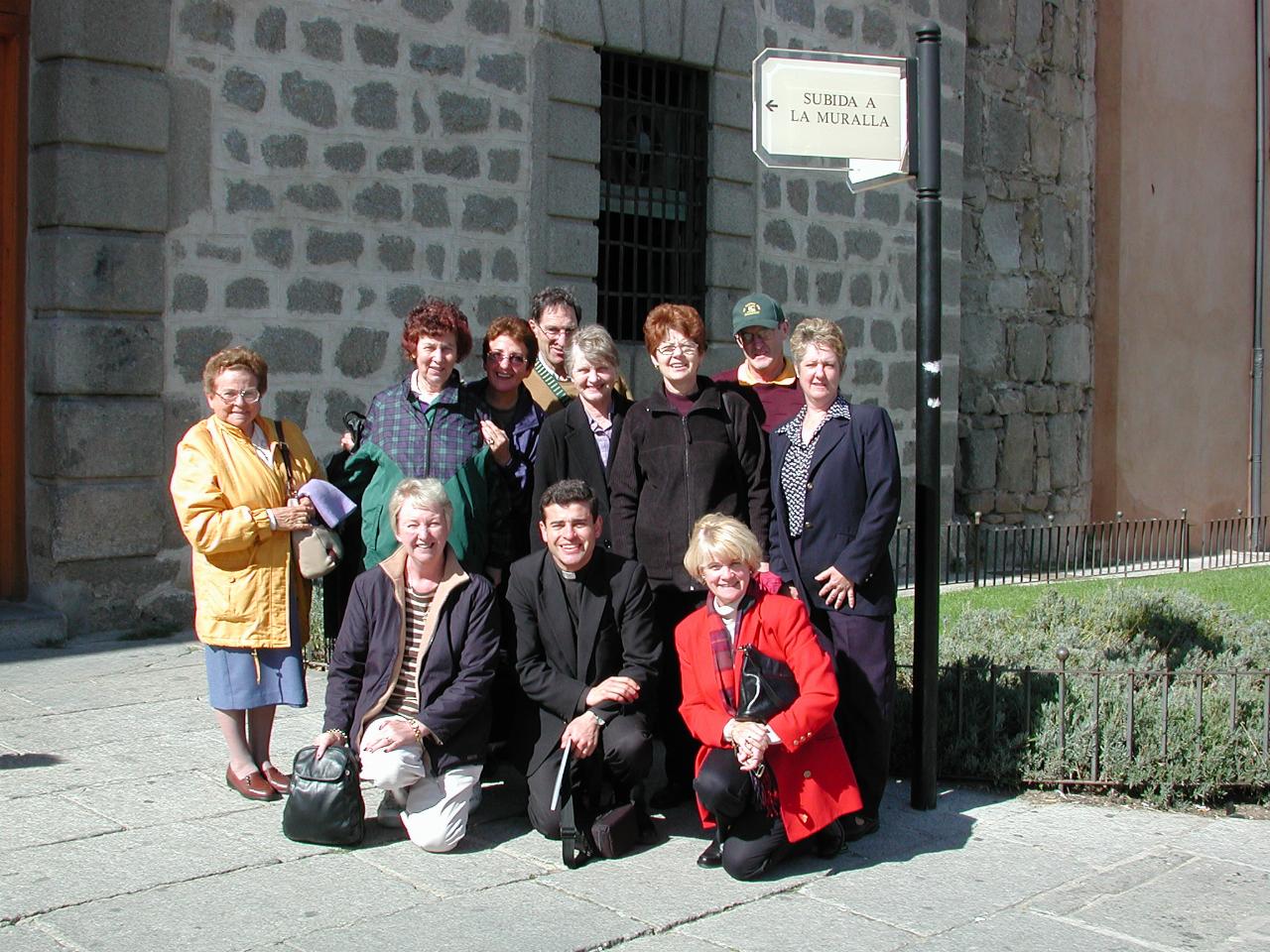
Ah, a partial group photo. Back row, left to right: Antoinette, Margaret, Carmen, Nick, Gabriella, Helen, Peter, Cath. Front row: Yvonne, Father Mark, Leonne
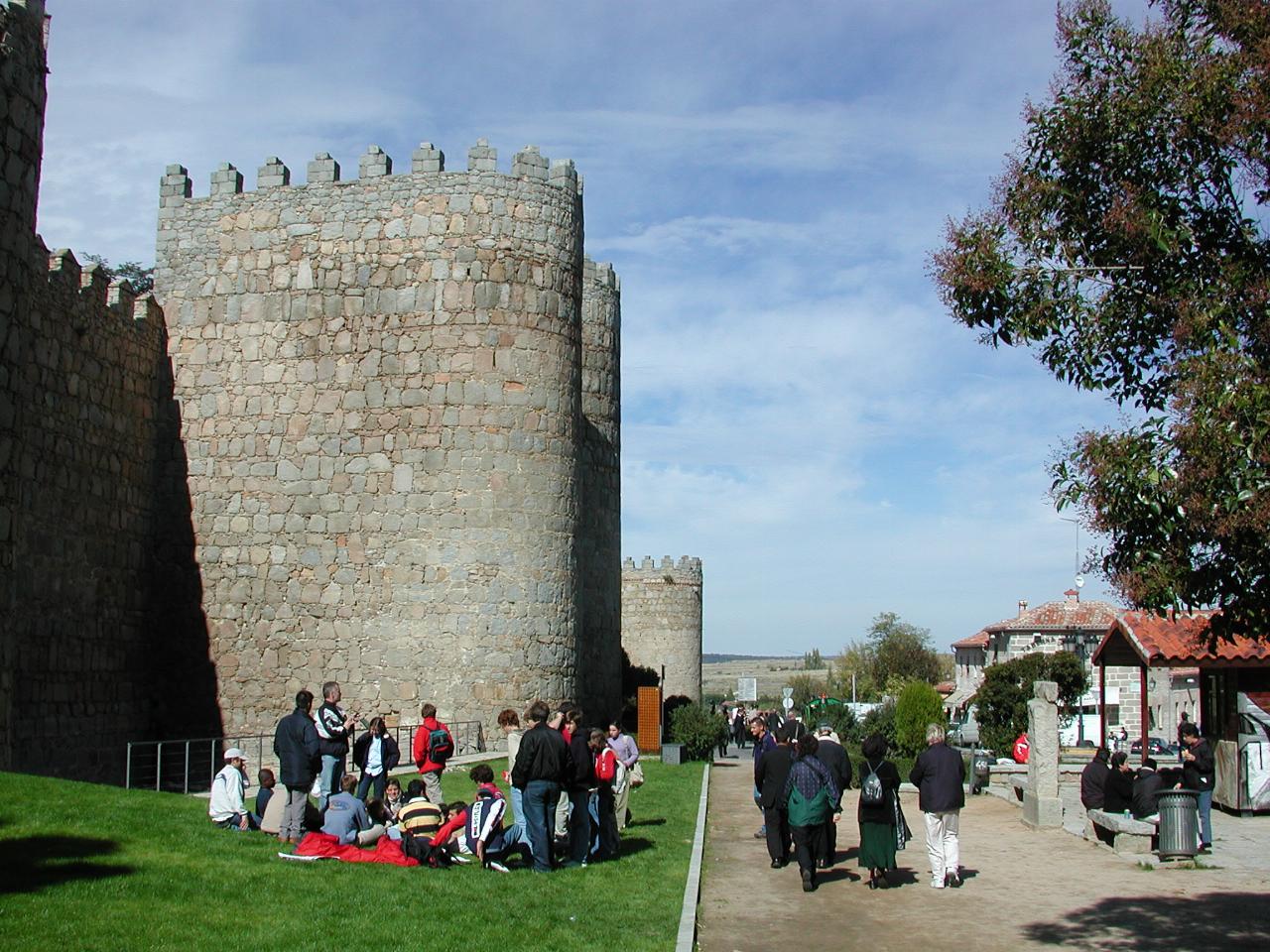
Group N walking back towards the bus, outside the walls of the old city, and providing some sense of scale to the walls.
The last two weeks were hectic, educational, emotional and very satisfying. The company was excellent, and added to the joys of the pilgrimage. Pilgrimages of old were done (at least in my imagination) under arduous circumstances by comparison with the ease of travel at the beginning of the third millenium. The occasional hiccups we had were, by comparison, nothing to the adventure of sea travel in small boats during stormy weather.
Thank you one and all for your company.